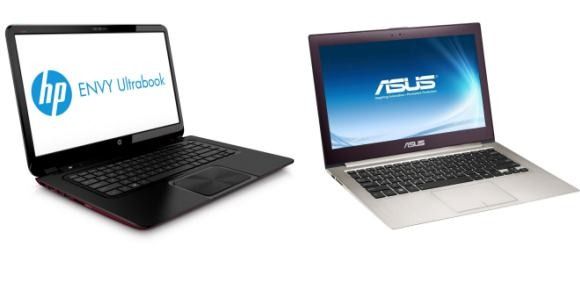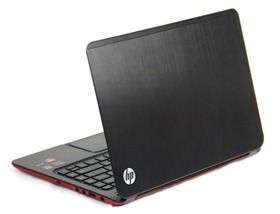Here’s a round-up of some news that I want to bring to you quickly. UK readers stay tuned. Students might want to buy an Envy 4 in the next 48 hours and Intel gives us more to think about on Ultrabook sales growth.
Intel’s Ultrabook Outlook
After a week of media speculation around ‘poor’ Ultrabook sales estimates – that weren’t exactly analyzed in a professional way in my opinion (Analyst Patrick Moorehead takes the same line on Forbes as I did here last week) there’s another point to consider this week after Intel’s Q2 earnings call. Paul Otellini gave us this to think about:
- 40 touchscreen Ultrabooks coming
- 12 of these will be convertibles
- A total of 140 designs on Ivy Bridge being developed
- Volume goals reached for H1 2012
- 40% of laptop sales will be Ultrabooks by end of year
Starting with the 40% figure it seems almost impossible that it could happen. Maybe on one day in December Amazon USA sells laptops that comprise 40% Ultrabooks but that’s something different to what you might expect. I’ve pinned my maximum at 20 million globally for which is around 10% of laptop sales for 2012 and I don’t regard Jan-May as any indication of how the rest of the year will play out. Nov and Dec are likely to see well over 50% of total 2012 sales due to Windows 8, touch and a competitive sales quarter.
On to Ultrabook design numbers, I find this more interesting. 140 is up, again, from early figures that Intel made public and shows serious momentum. It’s important because that number of Ultrabooks means that the top manfucaturers are all working on multiple devices – a sign of confidence. 2nd-tier manufacturers will be in the mix too which means that the lower-cost production lines are ready to move on Ultrabooks – another important sign. 40 touchscreen Ultrabooks will be interesting to track too. We’ve got a number of touchscreen devices in the database already but that’s nothing compared to what could be coming.
Bright Side of News has a good round-up of the second quarter earnings.
ASUS UX32VD in the UK
Following our tips for UK readers wanting to buy the ASUS UX32VD we’ve had feedback from a reader in the UK who says they are happy with the result they’ve had buying an ASUS UX32VD from a Dutch reseller. They’ve got hold of a UK version of the UX32VD for a reasonable price. 4launch.nl still have the ASUS UX32VD in stock right now but we’ve contacted them with a few questions about tax and support and we’ll get back to you in a fresh article if they answer. (We’ve asked for reader discounts and a review model of course!)
HP Envy 4 Gets 9/10
We highlighted the HP Envy 4 Ultrabook as a must-see in our round-up of the Amazon.com $100 offers this week. (The offer ends on Saturday – see details here) and we’ve just read through a detailed review from HardwareZone.com in Singapore that confirms the Envy 4 Ultrabook is one to look at. Yes, it’s 1366×768 but don’t let the HD screen fans put you off. 1366×768 is not exactly useless. [I use a 1366×768 screen myself – font sizes work perfectly for my eyes, especially when the Ultrabook is in a stand as a desktop, slightly further away than is normal – Chippy]
HardwareZone gives the HP Envy 9/10. Watch out for an even cheaper non-Ultrabook version of the HP Envy 4 (called the Envy 4 ‘Sleekbook’) that doesn’t have the SSD cache and is based on AMD – that might be a good price, but false economy depending on how the SSD is used. [Does the HP Envy 4 use ExpressCache – Anyone?]
“Great value, unique features, good battery life and a stylish design make the Envy 4 the Envy for everyone.” – HardwareZone
We’ve got all the specs and we’re updating review links in our HP Envy 4 information page.













Can we agree on one thing?
STOP MAKING EXCUSES FOR 1366*768 SCREENS. THEY SUCK. PERIOD.
Reviewers can actually make a difference. Start pushing the manufacturers to end this nonsense, for-profit-only decision of putting these damn 1366*768 screens on everything because they’re cheap as hell.
I’m sorry Kyle. I won’t be able to agree on that.
They are cheap, yes, but of value. At least to me.
Anyone else?
Happy to run a poll on this.
1366×768 13.3″ screen – What do you think.
Ban it
OK if priced right
Perfect for my eyes
I could just handle a 1600×900 13.3″ screen with Win 7 default font sizes and I tell manufacturers all the time that this should be the standard but 1366×768 still has value and is more readable (at 100% font sizes) on Win 7 for me.
The thing is, Chippy, if you broaden your horizon just a little bit, you’ll see why higher resolutions make absolutely a lot of sense.
1. I agree setting a high DPI setting in Windows screws up some programs’ layouts, but that is not M$’ fault. Programmers should take higher DPI into account when designing their software.
2. While higher DPI most likely will break some programs, if you MANUALLY set the font size (in the advanced graphics settings, it’s there, a little buried perhaps, but it’s definitely there), you’ll immediately see a difference. Fonts will be bigger, but absolutely crisp, almost like reading on regular paper. So this option WILL bring you bigger fonts with minimal breakage.
3. If you use Linux, obviously you won’t have this problem as the GUI is the most flexible there is. You can set any font you want, any size you want, any hinting you want etc. without any problems. This is just a sweet O.S. that once you get to know, you’ll never go back to Windows. Now, I understand that some must-have programs might be unavailable to you, but if you don’t have a need for specific programs, Linux will certainly reward you with the best possible display.
@Visigoth
You missed this part: “They are cheap, yes, but of value.”
There are may consumers (ie. non-professionals) that see 1366×768 on smaller screens perfectly okay especially if it means a lower price tag.
Ì don’t see problem if they put a normal price, not premium :)
For 13.3″ and smaller screens, I don’t see a problem. It’s even less of a problem if the notebook doesn’t come with a premium price.
High resolutions on small screens will just force people to increase font sizes which could make programs and websites look funny. There are browser extensions that would increase both font and image sizes (not Flash though) to make sites look less weird. However, increasing fonts and images kind of negates any increased screen real estate provided by higher resolutions.
Higher resolutions may make some images and videos look nicer if your face is 1 inch away from the screen but at a normal distance it’s not really noticeable. Maybe on the 14″ HP Envy 4 you’ll be able to notice it but I don’t have one.
The main people I see who actually need to have high resolution screens while being mobile probably shouldn’t be buying a small screened and underpowered ultrabook in the first place.
If it’s IPS then 1366×768 is fine.
All tablets have IPS screens why shouldn’t we have them too?
Good point Nick. An IPS 1366×768 (or high-brightness) module would be interesting if it was a cheap option.
While this I agree with you, what I can’t stand is the fact that manufacturers DON’T offer an option for 1080p resolution (or higher) on most of their notebooks. All we’re left with are some $2000+, highly specialized notebooks that most of us can’t afford.
Thankfully, Asus realized this and brought the ceiling way down to a more reasonable $1000 for a very nice 1080p notebook, and for that, I’m very grateful. :-)
The sooner manufacturers realise that some of us actually want higher resolutions the better, only Apple seem to have got it.
I want an ultrabook with the highest res screen possible, I can always scale fonts so they are readable.
A lot of the software I use gives me better views the more pixels I have.